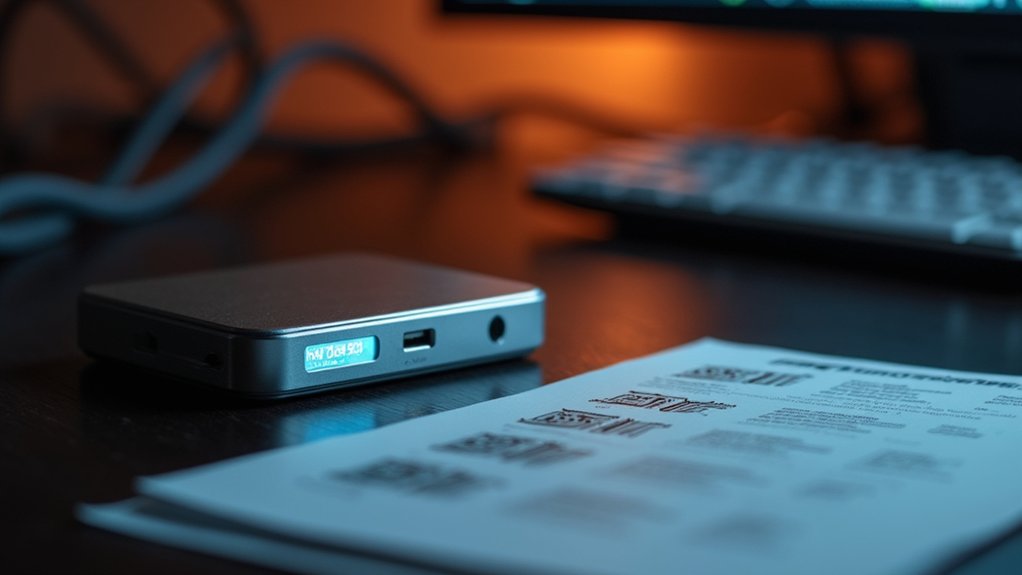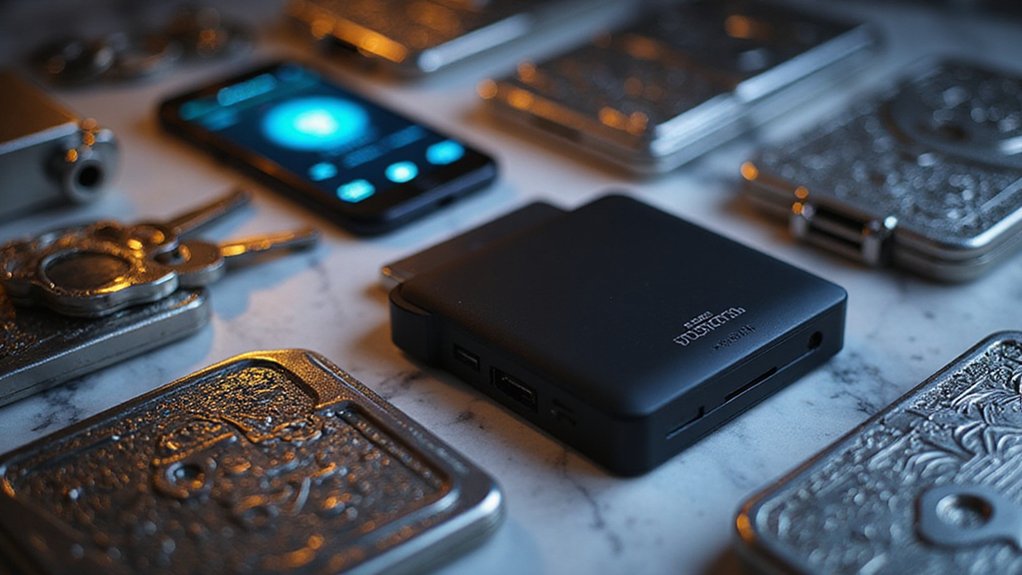Cold storage in cryptocurrency refers to the offline storage of private keys, effectively creating an air gap between digital assets and internet-connected devices. This method prioritizes security over convenience by removing keys from online platforms vulnerable to hacking—a lesson painfully learned from exchanges like Mt. Gox. Hardware wallets and paper wallets represent the primary cold storage solutions, offering institutional-grade protection for long-term holders who prefer acting as their own bank rather than trusting third parties with their digital fortunes.

The cryptocurrency investor who has watched countless exchanges collapse under the weight of hacking scandals—from Mt. Gox’s spectacular implosion to more recent debacles—understands that keeping digital assets on internet-connected platforms resembles storing cash in a glass house during a rock-throwing contest.
Cold storage emerges as the rational response to this digital vulnerability, representing the offline storage of cryptocurrency private keys to shield them from the perpetual threat of online theft.
This security methodology operates on a deceptively simple principle: what cannot be accessed through the internet cannot be stolen through the internet.
Cold storage removes private keys from connected devices entirely, creating an air gap between valuable assets and the marauding hordes of cybercriminals who prowl exchange platforms with algorithmic persistence.
The trade-off, naturally, involves sacrificing convenience for security—a bargain most serious investors consider eminently reasonable given the alternative of watching their portfolios vanish into the digital ether.
Hardware wallets represent the sophisticated end of cold storage solutions, with manufacturers like Ledger and Trezor producing USB-sized devices that resemble high-tech flash drives equipped with screens and, occasionally, Bluetooth connectivity.
These purpose-built instruments store private keys offline while facilitating transactions through secure interfaces, though they require an initial investment that separates casual speculators from committed participants. Maintaining regular firmware updates on these devices remains crucial to protect against newly discovered vulnerabilities.
Paper wallets occupy the opposite extreme, consisting of printed documents containing private keys or QR codes—a solution that costs nothing to create but demands meticulous physical safeguarding.
The irony of protecting cutting-edge digital currency with paper storage methods apparently escapes no one, yet these simple documents can secure vast fortunes provided they avoid fire, flood, or unfortunate encounters with shredders.
The advantages extend beyond mere theft prevention.
Cold storage proves ideal for long-term holdings, creating institutional-grade security for substantial cryptocurrency positions while reducing exposure to the constant digital assault that characterizes online storage. The system allows users to act as their own bank, eliminating the need to trust third-party institutions with their digital assets. Unlike traditional banking systems that can track and potentially refund stolen money, cryptocurrency transactions create irreversible transfers that make theft recovery impossible through blockchain’s public address design.
However, the physical risks remain non-trivial—lost hardware wallets or destroyed paper storage can render fortunes permanently inaccessible, transforming security measures into accidental wealth destruction mechanisms.
Best practices emphasize hardware wallet adoption for ideal security-convenience balance, secure physical storage locations, thorough backup procedures, and judicious access protocols that limit exposure frequency.
Frequently Asked Questions
Can I Lose My Cryptocurrency Forever if I Damage My Cold Storage Device?
Yes, damaging cold storage can result in permanent cryptocurrency loss, though the outcome depends on the storage method and backup preparations.
Hardware wallets typically offer seed phrase recovery options (assuming one bothered to record them), while paper wallets—those charmingly analog relics—provide no such safety net.
Without proper backups, physical destruction effectively transforms valuable digital assets into expensive digital dust, making recovery impossible regardless of market conditions.
How Much Does a Typical Hardware Wallet for Cold Storage Cost?
Hardware wallets typically range from $49 to $399, with most mainstream options priced between $50-$150.
Entry-level devices like Trezor Model One ($59) offer solid security, while premium models like Ledger Stax ($399) feature curved touchscreens and support thousands of cryptocurrencies.
Mid-range wallets ($80-$200) balance functionality with affordability—though one might question whether enhanced user experience justifies tripling the cost for what remains, fundamentally, a sophisticated USB stick.
Is It Possible to Hack a Cold Storage Wallet That’s Offline?
Hacking a truly offline cold storage wallet remains virtually impossible through conventional digital means—no internet connection, no remote access vector.
However, physical vulnerabilities persist: stolen hardware wallets can theoretically be compromised through sophisticated firmware attacks, supply chain tampering, or direct seed phrase exposure.
The irony? Most “hacks” involve user negligence rather than technical breaches, making human error the primary attack vector against otherwise impenetrable offline storage.
How Often Should I Create Backup Copies of My Cold Storage Keys?
Creating backup copies of cold storage keys should occur immediately after wallet setup and following any modifications to private keys or seed phrases.
Quarterly or biannual intervals prove sufficient for routine maintenance, though excessive backup frequency paradoxically increases exposure risk—a delightful irony in security protocols.
Regular testing guarantees backup functionality while maintaining that delicate balance between accessibility and protection.
The key lies in strategic timing rather than compulsive copying habits.
Can I Use the Same Cold Storage Device for Multiple Cryptocurrencies?
Most cold storage devices support multiple cryptocurrencies simultaneously, with isolation protocols ensuring Bitcoin keys remain segregated from Ethereum or altcoin storage.
Major manufacturers typically accommodate dozens of digital assets through unified interfaces, though compatibility varies—some requiring firmware updates for newer tokens.
While convenient for portfolio consolidation, users should verify specific coin support before purchase, as certain exotic altcoins may necessitate dedicated storage solutions despite manufacturers’ ambitious compatibility claims.









